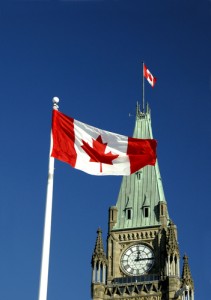 Originally published on July 20, 2015 in The Globe and Mail
Originally published on July 20, 2015 in The Globe and Mail
By David Mitchell –
It’s an essential election rule, but one that is widely misunderstood: When no single party wins a majority of seats in the legislature, the one with the largest number is not necessarily the victor. Yes, all 338 ridings in the October federal election will have winning MPs, but the outcome may not result in a clear winner with the right to form a government.
That’s because we elect parliaments in Canada – not governments – and a party leader who wants to become prime minister must enjoy the confidence of a majority of MPs.
Why is this so poorly understood? One reason is that Canada doesn’t have a simple, publicly accessible description of the conventions related to government formation, unlike Britain, Australia and New Zealand. In Canada, the rules are shrouded in secrecy and the often-opaque language of constitutional scholarship. As a result, election campaigns and their aftermath sometimes feature unnecessary debates about a single, incontrovertible fact: The House of Commons decides which party and leader has the required confidence to form a government.
Many elections in Canada have resulted in no single party holding a majority of seats. The federal contests of 2004, 2006 and 2008 all delivered minority governments, though who led them was not a foregone conclusion. Paul Martin’s Liberals successfully passed a budget in 2005, but only with NDP support for specific policy concessions. And when the roundly criticized 2008 economic and fiscal update of Stephen Harper’s Conservative minority government, combined with the possibility of an opposition coalition, inspired the Prime Minister to request a prorogation of Parliament, we were almost pushed into a constitutional crisis.
There are a number of Canadian precedents for parties forming governments without having won the most seats. In 1925, Prime Minister Mackenzie King’s Liberals won 15 fewer seats than the Conservatives led by Arthur Meighen. However, the fractured nature of that Parliament emboldened King to remain in office. More importantly, he was able to command the confidence of the Commons.
British Columbia had the most successful coalition government in Canadian history, serving from 1941-52. The Liberals and Conservatives ostensibly collaborated for the purpose of a united effort during the Second World War. But, in reality, they wanted to prevent the socialist CCF from forming a government, and the coalition was sustained well beyond the war years.
The Ontario Liberal/NDP agreement of 1985 permitted the second- and third-place parties, which together represented a majority of voters, to replace the governing Conservatives, which won the most seats but was shy of a majority. The centre-left parties aligned to defeat the Tories on a confidence vote. The lieutenant-governor then called on the Liberals to form a minority government, which they did with NDP support. And in Saskatchewan, NDP Premier Roy Romanow led a coalition government with the Liberals from 1999 to 2003.
We shouldn’t fear elections resulting in no clear “winner,” whether they lead to a coalition or an informal governing agreement. Our democracy and public institutions are impressively resilient and flexible in responding to sometimes unclear situations. Canadians need to understand this, and have easy access to the rules and conventions that determine who has the right to form a government if no single party has a parliamentary majority.
David Mitchell is president and CEO of the Public Policy Forum.

Leave a Reply